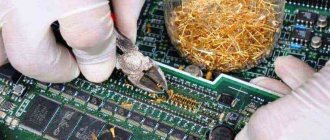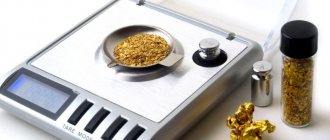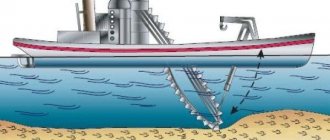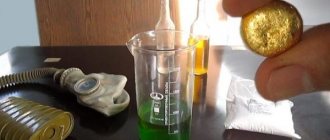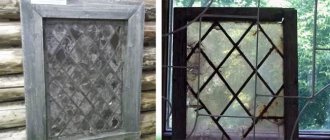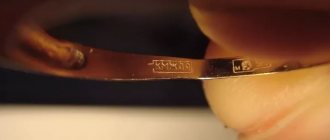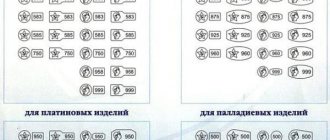Mining is an activity aimed at extracting mineral-containing substances from the depths of the earth or from its surface and processing them to obtain finished products. Gold mining is a priority in this area. This is largely due to the preciousness of the metal and its influence on the state of the gold and foreign exchange reserves of any country. Therefore, the gold mining industry occupies a special place in the system of state development, and new technologies are being developed and implemented to improve it.
The process of gold formation in nature
Gold deposits
Precious metals are found everywhere in nature, including the world's oceans and even plants, but there are no sufficiently effective methods for extracting them. Therefore, gold mining is carried out in deposits that are of two types.
Primary, called radical - their formation is associated with magmatic activity, when many molten components erupt to the surface of the earth, including gold-containing salt solutions, solidifying into veins.
Secondary, called alluvial - they are formed as a result of the release of precious metal from gold ore under the influence of natural processes (river flows, the appearance of ravines, rock falls) or climatic disasters (floods, mudflows, heavy rains).
When water erodes gold-bearing veins, it can carry particles of the yellow metal over considerable distances. Especially large pieces are called nuggets. Their weight varies from 5 grams to several kilograms.
Application in various industries
Until the 20th century gold was used exclusively as a means of payment and a material for making jewelry. And currently, a large number of different jewelry and jewelry are made from this metal. Moreover, if a gold item is dirty, you can use regular soap to clean it.
As industry developed, this precious metal began to be used in various industries. But even now large reserves of aurum are concentrated in state storage facilities as the main reserve as a means of payment.
This metal is used in instrument making because it transmits heat and electric current well.
Industry accounts for 10% of the use of this metal. Gold is most often used in the manufacture of electrical equipment. In addition, it is used in such industries as:
- Production of neutron bombs.
- Nuclear and space industries.
A thin layer of metal is applied to some windows to reflect sunlight and have energy-saving properties.
Gold is also used in medicine, especially in dentistry and pharmacology.
Cellular companies use this metal to apply gold plating to SIM cards.
The following will describe where gold is mined, which countries have the largest reserves of this metal, and mining methods.
Methods for extracting precious material from nature
Humanity has long been engaged in the search and development of precious metals, but despite this, gold mining for a long time was carried out using primitive methods, which, although rarely, are used in the modern world. They are called "traditional".
With the development of mechanical engineering and the growth of scientific and technological progress, many new methods for extracting gold have appeared, which are considered “modern”. They are a mechanized process and have the nature of industrial developments.
The process of extracting the yellow metal is not limited to digging it, cutting it down, or washing it out as part of the gold ore. The ability to isolate gold from blocks of rock and accompanying minerals is of great importance.
Manual sieving and washing method
Currently, this type of mining is considered artisanal and is rare, although it is one of the most ancient. It involves passing river sand through a sieve, wooden tray or burlap. In gold-bearing rivers, prospectors scoop up river sand and, pouring it onto a device, sift and wash it. Precious metal particles, which are larger in size than ordinary grains of sand, remain in the dish and are collected in a separate container.
Such work is very complex, painstaking, and requires a lot of effort and time. In addition, it involves prolonged exposure to water, which is also an additional negative factor. However, the result cannot be predicted in advance.
Mechanized mines
Modern technologies make it possible to facilitate the work of miners by mechanizing most of the processes of sifting and washing river soil. Dredgers, pumps, screens and other mechanisms make it possible to lift sand from great depths, deliver it to the shore and process it in a shorter period of time and with less labor than when working by hand.
But, despite a significant reduction in manual labor, its percentage in the gold mining process remains high. Therefore, work in the mines is still considered one of the most difficult.
Extracting gold from ore
Extracting gold from ore
Previously, such mining was carried out manually and was always associated with a great risk to the life and health of the gold miner, because it was accompanied by digging mines, the presence of landslides and collapses, or staying in mountainous areas.
Now this practice of obtaining gold has been stopped, and the development of gold ore is carried out using a mechanized method. The rock is extracted from a mine or quarry using powerful equipment, after which it is crushed and sifted in special mechanisms.
Quite often, to speed up excavation, gold mining sites use explosive and drilling and blasting methods, which makes it possible to produce and process larger volumes of rock in a short time.
How gold is mined today
Modern methods of the gold mining industry have retained a general principle that has essentially remained unchanged. This is crushing and sifting of gold ore, carried out in our time using special expensive machines. The general stages of the process can be described by the following activities:
- Geological exploration. The longest and most important stage, the results of which directly determine the payback of the mines being organized. In this case, geologists give preference to areas where rocks of different composition collide, as well as lowlands of rivers, the water of which contains a high content of precious metal. A good sign is the abundance of quartz, calcined pebbles, black sands and everything associated with iron. During the exploration process, pits are dug, soil and water samples are taken, and the external conditions of a particular landscape are assessed.
- Drawing up a competent opinion on the feasibility of organizing a mine in a given area. At the same time, a gold mining map is being developed, which will be the main topological guide for ore collection. The expert opinion includes calculations of costs and estimated volumes of gold that can be recovered at a particular site.
- Organization of a mine with the supply of gold mining equipment, construction of a camp for workers, arrangement of access roads. The gold mining site requires the creation of a control system and a guarded perimeter.
In most cases, such mines produce gold sand or nuggets, which are subsequently purified and enriched by industrial methods. The equipment used is powerful dredges operating on the chute principle. A large amount of rock is placed in such units, which is sifted through a sieve under water pressure and vibration. Since gold-bearing sand and nuggets are heavier and denser than any pebbles or crushed stone, they remain in the washing tank.
This method has come to us since time immemorial, and modern science has only equipped it with mechanized productive units. Often, amalgamation is used in this process, which can significantly reduce the loss of the precious metal, which, when interacting with mercury, remains in full at the bottom of the barrel. If gold is contained in the ore in small quantities, it is separated using cyanidation technology. The same method makes it possible to extract the remains of precious metal from waste mine dumps of washed rock.
A positive decision on the organization of a mine is made if, during test washings, there is at least 3 grams of pure gold per 100 kilograms of ore. If the amount of precious metal is 8-10 grams, then such a deposit is considered rich.
Methods used to separate gold from the total output mass
The gold mining industry divides deposits according to their profitability, based on the amount of precious metals per certain volume of processed soil:
- 10 gr. per ton of rock/sand – rich;
- 3 grams of gold per ton is profitable.
Every year there are fewer and fewer rich deposits in the world, so much attention is paid to the ability to isolate gold with the least loss from the total processed rock mass. There are quite a lot of such methods.
Amalgamation
This method is based on the use of mercury to separate the precious metal from the ore mass. Mercury has the ability to attract gold particles, enveloping them. The gold extraction process consists of several stages:
- Using the peculiarity of mercury, it is placed in special containers, into which the rock is then poured.
- The noble metal is literally removed by mercury from the general contents of the container, after which the devastated rock is removed.
- To free the yellow metal from the embrace of the white, the container heats up and delamination occurs on its own.
The amalgamation method was widely popular, but was gradually replaced by more progressive and safer methods for obtaining gold that did not involve the use of highly toxic mercury.
Heap leaching
At the moment, this is the most widely used and highly productive method, allowing the extraction of gold even from previously processed ore, as well as from rocks recognized as low in precious metal content. The use of sodium cyanide ensures the conversion of gold particles (even the smallest ones) into cyanide compounds. Subsequently, with the help of chemical reactions, the metal is separated and purified from impurities.
This gold leaching technique makes it possible to more completely process gold ore and makes new use of old deposits and previously abandoned developments feasible.
Method of etching gold from products
Etching gold from products
This method is not industrial, but is used in extracting precious metals from old radio components, gold-plated products for household and household purposes. The etching method is based on the chemical inertness of the desired element. To achieve success, it is necessary to collect a large batch of the above items, separate the gold-containing elements and place them in a solution of concentrated nitric and hydrochloric acid, called “aqua regia”.
A special feature of this solution is the ability to dissolve all metals except gold without residue, so the result will be a gold film on the surface of the liquid. It can be separated using regular cloth.
Ore processing
But this is not the whole process of gold mining, but only part of it. The next step: you need to extract the precious metal from the ore.
| Work performed | Result |
| First, large pieces of rock are crushed. | They shrink to the size of large grains of sand. |
| Then a cyanide solution is added and everything is mixed. | The result is a dirty, thick, liquid mixture. A cyanide solution in the presence of air liberates gold from the rock and trace metals. |
| As soon as the process is completed, the liquid is pumped out, and solid particles fall into a special tank. | There the reaction continues: the remaining cyanide solution isolates the rest of the gold. Heavy and large particles settle. |
| Zinc is added to the saturated solution, which releases the remaining gold from the mixture. | This process - called cyanide leaching - despite its high costs, is very profitable for gold mining companies. When used, up to 98% of gold is released from ore. |
For further purification, the metal is sent to a smelting furnace. Here gold is mixed with flux (a special chemical cocktail) and heated to one and a half thousand degrees. Result: approximately 80% cleansing of dirt and toxins. Further remelting makes the metal even purer.
Well, then it is used in medicine, microelectronics, aviation, astronautics and other industries. Bank bars of the famous gold standard are poured from it - 999 fine. It is extremely rare to use metal of this purity for jewelry because it is easily subject to deformation, which is impractical. In jewelry, the gold content is usually less than in bank bullion - due to additional metals (ligatures), which make the alloy more durable and even change its color.
There are fewer and fewer ores left in the world from which gold can be extracted using relatively simple methods. Perhaps only the gold-bearing conglomerates of South Africa allow such methods. In all other countries, the extraction of this metal is constantly becoming more complex and technologically advanced.
Production processes in the production of precious metals
The heap gold leaching method involves a number of production processes, the result of which is the yield of a pure precious product:
- after delivering the gold ore to the processing plant, it is placed in mills, where it is crushed to a certain fraction;
- after this, the material is passed through sieves and goes through a pelletizing stage, which prevents the factions from sticking together into large compounds;
- then the resulting mass is sent for leaching with sodium cyanide and formed into an ore pile;
- the next step is the separation of waste ore from metal cyanide compounds by sorption;
- the extracted gold-containing compounds are sent for galvanization, where preliminary purification occurs.
The completion of the process is the melting of the resulting sediment until the alloy is released, which is subsequently leached from ore residues.
Flotation enrichment
The flotation method of gold enrichment became widespread in the 1930s. “flotation” itself comes from the English word “flotation”, which means floating or floating. This process of gold enrichment received this name because it involves the separation of small solid particles in an aqueous environment.
The technology for enriching gold ore is based on the selective fixation of minerals at the interface and, as a consequence, their wettability.
Flotation is carried out in mechanical flotation machines in the form of a sheet steel bath, divided by partitions into several cubic chambers. A mixture of finely ground ore and liquid along with special reagents is fed into the apparatus.
Through the first chamber of the machine, it enters a rapidly rotating mixer - a wheel with blades made of solid steel, which rotates at a speed of 275-600 rpm, simultaneously sucking in air.
As a result of rotation, the pulp is mixed with small air bubbles. Under the influence of reagents, gold-containing particles lose their ability to be wetted by water.
As a result, they stick to air bubbles and float to the surface of the flotation machine chambers in the form of foam, while the unnecessary material remains in the pulp. The “golden” foam is dehydrated to obtain a concentrate, which is sent for thickening and subsequent processing.
The flotation method is relatively expensive and at the same time causes some harm to the environment. But its popularity is dictated by its versatility: flotation concentration is applicable for almost all minerals.
Gold mining in the cold season
It is easier to mine gold in the cold season than in summer
Most miners would prefer gold mining in the warm season, when the result promises to be more tangible and working conditions are much more comfortable. But in reality, searching for metal in winter or early spring has its advantages that cannot be ignored. The main thing is to know where to look. For this method, you must take hunting skis (not cross-country skis) for traveling over rough terrain.
It is much easier to detect and remove valuable metal in clean, clear water in winter than in summer. When searching, you need to take into account that river levels drop significantly in the cold months. Therefore, usually shallow places that are promising for searching during this period become even shallower and more accessible for exploration, and areas of rocks previously covered by water begin to be visible above its surface.
The advantage is the ability to notice yellow reflections simply on the surface of the rocks (an additional tool for beating off pieces of rock will be useful). In addition, in winter you can find the precious metal in larger quantities on the rocks than in the sand in summer.
The right place is the basis for a successful search for the treasure.
Chemical and physical properties of metal
This precious metal has the following characteristics:
- Chemical properties. Gold is not able to react or be affected by other aggressive chemical elements. That is, this metal does not oxidize, which is one of its advantages.
- Physical properties. The metal is yellow in color, quite soft, but at the same time dense, this determines the significant weight of products made from it.
In its pure form, the metal can be processed well and is easy to:
- melt, already at a temperature of +1064°C it easily changes shape;
- forged, it can be used to create a very thin plate.
The main disadvantages of this metal include its low hardness. This has to be eliminated by adding other alloys to the substance in the form of copper, silver, platinum or steel.
